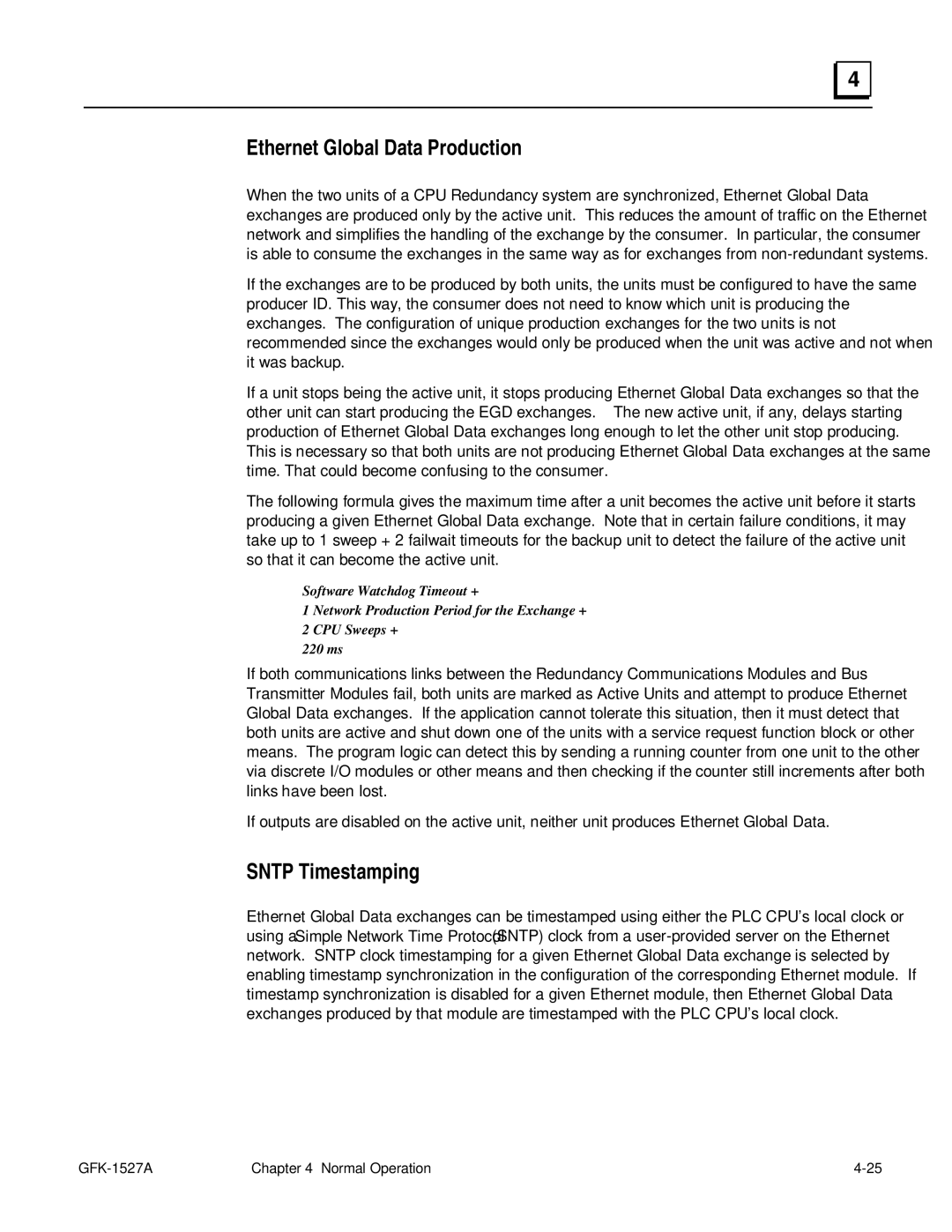4 |
Ethernet Global Data Production
When the two units of a CPU Redundancy system are synchronized, Ethernet Global Data exchanges are produced only by the active unit. This reduces the amount of traffic on the Ethernet network and simplifies the handling of the exchange by the consumer. In particular, the consumer is able to consume the exchanges in the same way as for exchanges from
If the exchanges are to be produced by both units, the units must be configured to have the same producer ID. This way, the consumer does not need to know which unit is producing the exchanges. The configuration of unique production exchanges for the two units is not recommended since the exchanges would only be produced when the unit was active and not when it was backup.
If a unit stops being the active unit, it stops producing Ethernet Global Data exchanges so that the other unit can start producing the EGD exchanges. The new active unit, if any, delays starting production of Ethernet Global Data exchanges long enough to let the other unit stop producing. This is necessary so that both units are not producing Ethernet Global Data exchanges at the same time. That could become confusing to the consumer.
The following formula gives the maximum time after a unit becomes the active unit before it starts producing a given Ethernet Global Data exchange. Note that in certain failure conditions, it may take up to 1 sweep + 2 failwait timeouts for the backup unit to detect the failure of the active unit so that it can become the active unit.
Software Watchdog Timeout +
1 Network Production Period for the Exchange +
2 CPU Sweeps +
220 ms
If both communications links between the Redundancy Communications Modules and Bus Transmitter Modules fail, both units are marked as Active Units and attempt to produce Ethernet Global Data exchanges. If the application cannot tolerate this situation, then it must detect that both units are active and shut down one of the units with a service request function block or other means. The program logic can detect this by sending a running counter from one unit to the other via discrete I/O modules or other means and then checking if the counter still increments after both links have been lost.
If outputs are disabled on the active unit, neither unit produces Ethernet Global Data.
SNTP Timestamping
Ethernet Global Data exchanges can be timestamped using either the PLC CPU's local clock or using a Simple Network Time Protocol (SNTP) clock from a
| Chapter 4 Normal Operation |
